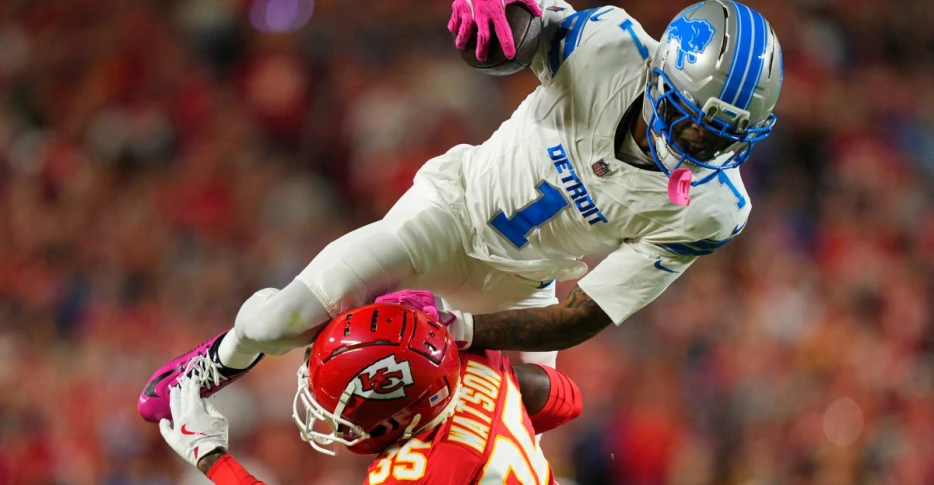
 Pride of Detroit
Pride of Detroit
The Detroit Lions (4-2) are dealing with a lot of injuries in their secondary and needed to make several roster moves to put enough healthy players on the field on Sunday night. Let’s take a look at this week’s snap counts to see how the Lions adjusted their personnel for the Chiefs game.
By the numbers, Goff had a decent game, but the offense’s inability to make plays in the right moments came back to bite them in the end, resulting in fewer chances than typical.
Gibbs got a large workload early as the Lions opened the game with a 10-minute drive that heavily featured the speedy back. But as the Lions fell from behind, his touches dwindled, and he only saw four second-half runs, including just one (a three-yard loss) in the fourth quarter. Montgomery saw just six total touches in the game: four first-half runs and two second-half receptions.
For an offense whose identity is ingrained in running the ball, calling only four second-half run plays was a strong departure from what had previously earned them four victories.
With Raymond a non- or limited-participant in practice all week due to a neck injury, the Lions leaned on their rookie TeSlaa to step into their WR3 role. Unfortunately, neither were targeted in this game as the Lions focused on St. Brown and/or Williams on 17 of their 27 passing plays.
LaPorta continues to see the field at an extremely high rate as the Lions are working to maximize his skill set as a receiver and blocker. Wright and Dwelley’s snaps were a tick higher than typical, as the Lions operated with bigger sets against the Chiefs.
After not deploying a sixth offensive lineman set through the first five games of the season, the Lions opened the game with Colon in that role and used him two more times throughout the game. Skipper indeed got the start, as expected, making him...